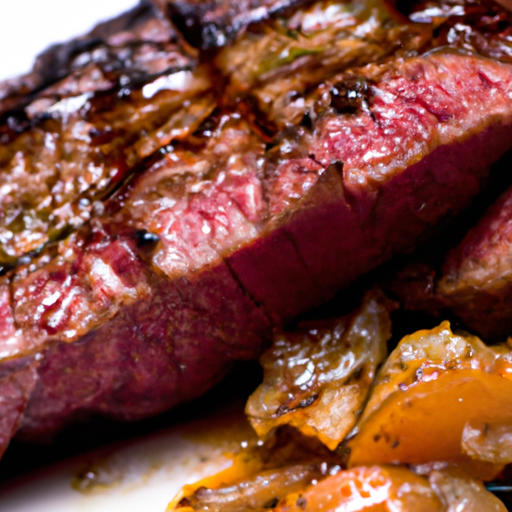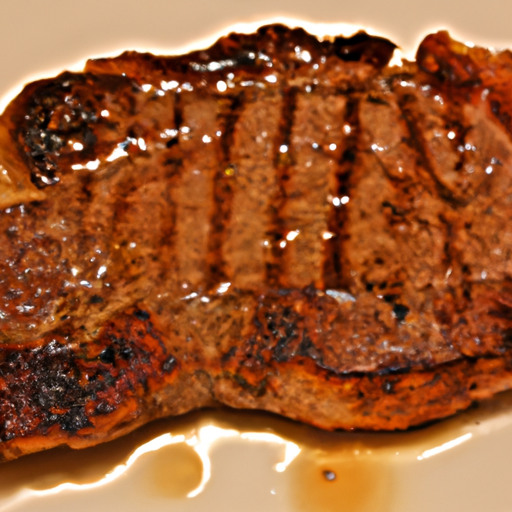You’re in for a treat with the “Perfectly Cooked Sirloin Steak.” This mouthwatering steak is expertly cooked to perfection, delivering a sensational burst of flavors that will leave you craving for more. With precise cooking times for different levels of doneness, you can indulge in a juicy medium-rare steak or opt for a tender well-done piece, ensuring an unforgettable dining experience every time. Get ready to savor the incredible taste and tenderness of this delectable cut of meat.

Choosing the Right Cut of Sirloin Steak
When it comes to preparing a delicious sirloin steak, one of the first steps is choosing the right cut. The sirloin is a popular and flavorful cut of beef that is known for its tenderness and rich flavor. However, there are different cuts within the sirloin section, and understanding the differences can help you make an informed decision.
Understanding the Different Cuts
The sirloin is located towards the rear of the animal, just above the round and below the tenderloin. It can be divided into several cuts, including top sirloin, bottom sirloin, and tri-tip.
- Top Sirloin: This cut is the most tender and flavorful part of the sirloin. It has a nice balance of tenderness and juiciness, making it a popular choice for grilling.
- Bottom Sirloin: The bottom sirloin is slightly less tender than the top sirloin but is still a great option for grilling or pan-searing. It has a slightly larger fat cap, which adds flavor and juiciness.
- Tri-Tip: This triangular-shaped cut is taken from the bottom sirloin and is known for its intense beefy flavor. It can be grilled, roasted, or thinly sliced for sandwiches.
By understanding the different cuts of sirloin, you can choose the one that best suits your preferences and cooking method.
Selecting the Ideal Thickness
Once you have chosen the cut of sirloin steak, selecting the ideal thickness is key to achieving the perfect level of doneness. Thicker cuts will require more cooking time, while thinner cuts will cook faster and may be more prone to overcooking.
Aim for a thickness of around 1 to 1.5 inches for grilling or pan-searing. This thickness allows for an even cooking process and helps to retain the steak’s juiciness. If you prefer your steak cooked more on the rare side, you can opt for a slightly thicker cut to ensure the center remains pink and tender.
On the other hand, if you prefer your steak well-done, consider choosing a thinner cut to avoid excessive cooking time. Remember, thicker or thinner cuts will affect the cooking time, so adjust accordingly based on your desired level of doneness.
Assessing the Marbling
Marbling refers to the white streaks of fat that are dispersed throughout the muscle of the steak. It plays a significant role in the taste, tenderness, and moisture of the meat.
When selecting a sirloin steak, take a close look at the marbling. More marbling typically indicates a higher quality steak, as the fat will melt during cooking and infuse the meat with a rich, juicy flavor. Avoid steaks with large patches of fat or excessive connective tissue, as these can negatively impact the taste and tenderness.
Remember, marbling is not the only factor to consider when selecting a steak, but it can serve as a useful indicator of quality and flavor.
Preparing the Steaks
Once you have chosen the perfect cut of sirloin steak, it’s time to prepare it for cooking. Properly thawing, seasoning, and allowing the steaks to reach room temperature are essential steps to ensure a delicious and evenly cooked steak.
Properly Thawing the Steaks
If you are using frozen steaks, it is crucial to thaw them properly before cooking. Avoid thawing them at room temperature, as this can lead to bacterial growth. The best method for thawing steaks is to place them in the refrigerator overnight, allowing them to slowly thaw without compromising their quality.
If you’re short on time, you can also use the cold water method. Place the frozen steaks in a sealed plastic bag and submerge them in cold water. Change the water every 30 minutes to ensure it stays cold. This method will speed up the thawing process, but it is essential to cook the steaks immediately after they are fully thawed.
Seasoning the Steaks
Seasoning is a crucial step when it comes to enhancing the flavor of your sirloin steak. While some may prefer a simple salt and pepper seasoning, you can get creative with your choice of spices and herbs.
For a classic and flavorful combination, try seasoning your steak with a mixture of salt, pepper, garlic powder, and paprika. The salt will help to enhance the natural flavors of the meat, while the pepper adds a slight kick. The garlic powder and paprika will contribute a delicious depth of flavor.
To season the steak, simply sprinkle the desired amount of seasoning on both sides and gently pat it into the meat. Allow the steaks to sit for a few minutes, allowing the flavors to penetrate the meat.
Allowing the Steaks to Reach Room Temperature
Before cooking your sirloin steaks, it’s essential to allow them to reach room temperature. This step ensures that the steak cooks evenly throughout and minimizes the risk of overcooking the exterior while the center remains undercooked.
To bring your steaks to room temperature, remove them from the refrigerator and let them sit on the counter for approximately 30 minutes to an hour before cooking. Be mindful of the time and avoid leaving the steaks out for too long, as this can lead to spoilage.
By allowing the steaks to come to room temperature, you will achieve a more consistent and evenly cooked result.

Preheating the Cooking Surface
Now that your steaks are prepped and ready, it’s time to focus on preheating the cooking surface. Whether you choose to grill your sirloin steak or cook it on a stovetop, the preheating process is essential for a beautifully seared and evenly cooked steak.
Choosing the Best Cooking Surface
When it comes to cooking a sirloin steak, there are two popular options: grilling and stovetop cooking. Each method has its advantages and can yield delicious results.
Grilling offers a distinct smoky flavor and allows for the natural juices of the steak to be retained. It is ideal for outdoor cooking and provides excellent heat distribution for consistent cooking. On the other hand, stovetop cooking, whether using a cast-iron skillet or a stainless steel pan, offers more control over the cooking process and can create a mouthwatering sear.
Choose the cooking surface that best suits your preferences and equipment.
Preheating the Grill
If you choose to grill your sirloin steak, it’s important to preheat the grill properly to ensure even cooking and prevent sticking.
Start by cleaning the grill grates to remove any debris or leftover food particles. Preheat the grill to a medium-high heat, around 400°F to 450°F. This temperature range allows for a good sear while preventing the steak from becoming too charred on the outside.
While the grill is preheating, keep the lid closed to allow it to heat up evenly. This process usually takes around 10 to 15 minutes, depending on your grill’s size and power.
